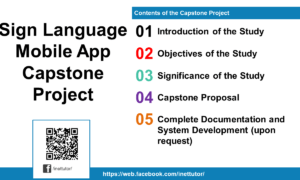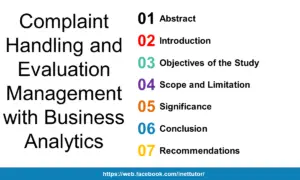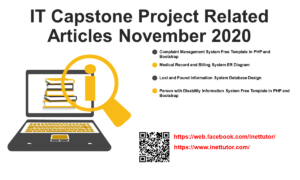Capstone Project Topics for Attendance System
Are you looking for an exciting and challenging capstone project topic in the field of attendance system? As a student, it can be daunting to choose the right project topic that aligns with your interests, skills, and career goals. However, the attendance system is an essential aspect of any organization, and developing a capstone project in this area can be both rewarding and beneficial for your career advancement.
In this blog post, we have compiled a list of diverse and innovative capstone project topics for attendance system that you can consider for your final project. From biometric-based attendance system to RFID-based employee monitoring, barcode-based attendance information security management system to GPS-based attendance system for remote workers, we have covered various topics that cater to different technologies and industries.
Furthermore, we have provided a brief overview of each project topic, including its conceptual framework, ER diagram, use case diagram, review of related literature, and database design. You can use this information to evaluate the scope, feasibility, and complexity of each project topic and select the one that suits your interests and skills.
We believe that our comprehensive list of capstone project topics for attendance system will inspire and guide you to embark on an exciting and fulfilling journey of developing a project that not only demonstrates your technical abilities but also contributes to the advancement of attendance system technology. So, let’s explore the possibilities and find the perfect project topic for you!
What is a Capstone Project for IT?
Table of Contents
A capstone project is a final project that students in IT or IT-related courses undertake to demonstrate their practical knowledge, skills, and expertise. It is usually a culmination of the student’s academic journey, and it enables them to apply theoretical knowledge to real-world problems. The project typically requires students to develop a practical solution to a problem or create an innovative product using their IT skills.
Capstone projects can take various forms, such as developing a software application, designing a database system, creating a website, or implementing an IT infrastructure for an organization. The project is often done in a team or individually, and it requires students to conduct research, analyze data, and apply critical thinking skills to solve complex problems.
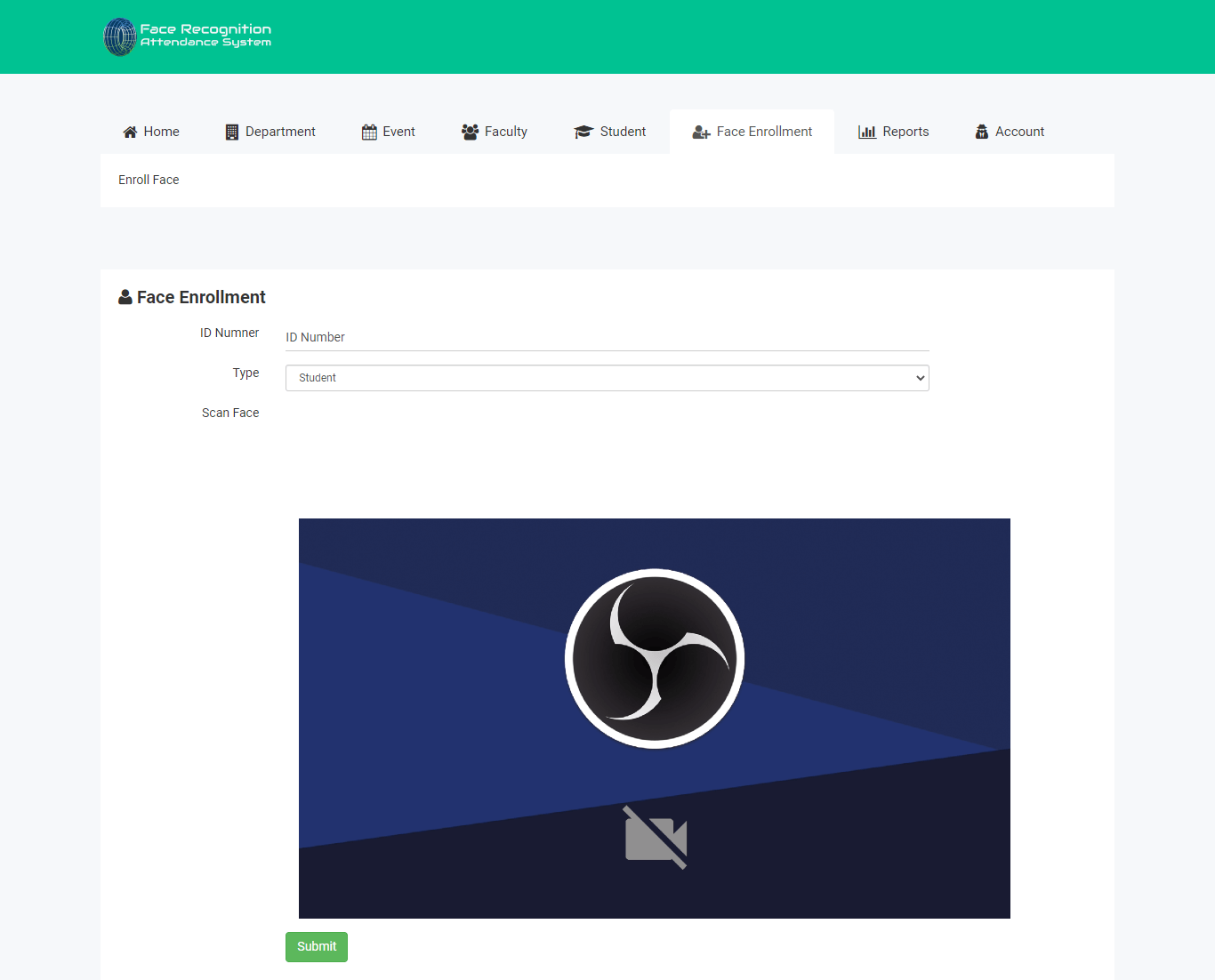
The primary goal of the capstone project is to prepare students for the workforce by providing hands-on experience in the application of IT skills. It also enables students to showcase their creativity, problem-solving abilities, and critical thinking skills, which are highly sought after in the IT industry. Overall, a capstone project in IT is an excellent opportunity for students to demonstrate their abilities and gain practical experience in their field of study.
What is Attendance Management System?
An attendance management system is a software application that is designed to keep track of employee attendance, working hours, and other related information. It is commonly used by businesses and organizations to monitor the attendance of their employees, whether they are working in the office or remotely.
The system generally consists of a central database, which stores all the information related to employee attendance, including the time of arrival, departure, and breaks taken. The system can also generate reports, such as attendance records, leave records, and overtime records. Additionally, the system may include features such as leave management, shift scheduling, and automated notifications.
Attendance management systems can help organizations to streamline their HR processes, reduce administrative work, and increase accuracy in tracking employee attendance. It can also help in identifying patterns of absenteeism or tardiness, which can help managers to take corrective actions to improve employee productivity and attendance.
Objectives for the development of Attendance System
The primary objective of developing an attendance management system is to automate and streamline the process of monitoring and tracking attendance. The system should be designed to accurately capture attendance data, generate reports, and facilitate decision-making for administrators, educators, and parents.
The manual method of tracking attendance is prone to errors, time-consuming, and can be easily manipulated. The traditional method of taking attendance on a register or manually entering data into spreadsheets can lead to inaccuracies in tracking attendance, which can be a significant problem for educational institutions. These errors can lead to discrepancies in the number of days attended by a student, which can affect grades and lead to legal issues in some cases.
Automating the attendance management system using technology can significantly improve the accuracy and reliability of tracking attendance. It can save time for administrators and educators by eliminating the need for manual data entry and making the attendance data available in real-time. It also allows for easier identification of patterns in attendance and absenteeism, enabling institutions to take appropriate actions to improve student attendance and academic performance. An automated attendance management system can help educational institutions operate more efficiently, save time and resources, and ensure compliance with legal and regulatory requirements.
Hardware and other technologies used
There are several hardware and technologies that can be used to enhance an attendance management system. Some of these include:
- Biometric devices: These devices use unique physical characteristics, such as fingerprints or facial recognition, to verify the identity of an individual and record their attendance.
- RFID cards: RFID (Radio Frequency Identification) cards are used to track attendance by scanning the card when an individual enters or exits a building or room.
- Barcode scanners: Similar to RFID cards, barcode scanners can be used to track attendance by scanning a barcode on an ID card or badge.
- GPS tracking: This technology can be used to track the location of employees or students and verify their attendance based on their proximity to a specific location.
- Mobile applications: Mobile apps can be used to allow employees or students to record their attendance using their smartphones or tablets.
- QR Code Scanners: These can be used to scan QR codes on ID cards or badges to quickly and accurately record attendance.
- Face Recognition Technology: This technology can be used to automatically identify and record attendance by analyzing facial features of individuals.
These technologies can enhance the accuracy and efficiency of an attendance management system, as well as provide real-time data for analysis and reporting. By automating the attendance tracking process, organizations can save time and resources, reduce errors and inaccuracies, and improve overall productivity.
Attendance System Capstone Project Topics
- QR Code Based Attendance System Conceptual Framework – The conceptual framework outlines the design and functionality of the system, including the process of generating and scanning QR codes to record attendance.
- RFID Attendance System Conceptual Framework – This post explores the use of Radio-Frequency Identification (RFID) technology in attendance monitoring. The conceptual framework highlights the advantages of RFID-based attendance systems, such as accuracy and real-time tracking.
- QR Code Attendance System Use Case Diagram – A use case diagram is a visual representation of the interactions between users and a system, showing the different ways in which users can interact with the system to achieve their goals. In the case of a QR Code Attendance System, a use case diagram would illustrate the different scenarios in which users, such as teachers and students, would interact with the system to record attendance. This may include scanning a QR code with a mobile device, accessing the system through a web interface, or receiving SMS notifications.
- Attendance System Using Near Field Communication Technology – Near Field Communication (NFC) is a wireless communication technology that allows two devices to communicate when they are brought close together. An Attendance System Using NFC technology would enable students and teachers to record attendance by tapping their NFC-enabled devices on a reader. The system would store this information in a database and could generate reports or notifications based on attendance records.
- Face Recognition Attendance System ER Diagram – An ER (Entity-Relationship) diagram is a visual representation of the data structure of a system, showing the relationships between different entities and their attributes. In the case of a Face Recognition Attendance System, an ER diagram would illustrate the relationships between the different entities, such as students, teachers, attendance records, and facial recognition data. This would include details such as student ID numbers, names, and images, as well as the date and time of attendance records and any relevant metadata related to facial recognition technology.
- IPO Model Conceptual Framework of Face Recognition Attendance System – This topic provides a detailed description of the IPO (Input-Process-Output) model for the face recognition attendance system. It explains how the system works by capturing images of students and processing them to identify their faces. It also highlights the various input and output components of the system and how they are connected.
- Web-Based Attendance System Free Download Bootstrap Template – This topic focuses on a web-based attendance system that can be downloaded for free along with a bootstrap template. The topic provides information on the features of the system and how it can be customized using the bootstrap template.
- Face Recognition Attendance System Application Free Download Bootstrap and PHP Script – This topic provides information about a face recognition attendance system application that can be downloaded for free along with a bootstrap and PHP script. The topic explains the features of the application and how it can be installed and configured.
- QR Code Attendance System with SMS Notification – This topic explains how a QR code attendance system can be implemented with SMS notification. It provides a detailed description of the system’s features and how it works. The topic also explains the advantages of using this system over traditional attendance methods.
- Abstract of Student Attendance System – This topic provides an abstract of a student attendance system, highlighting its features and functionalities. It explains how the system works and how it can be used to monitor student attendance. The topic also discusses the benefits of using an automated attendance system in educational institutions.
- Face Recognition Attendance with SMS Notification Capstone Project – This project focuses on developing an attendance system using face recognition technology and SMS notifications. The project includes a complete system design, implementation, and testing using relevant tools and technologies.
- School Event Attendance Monitoring System Capstone Project – This capstone project involves the development of a system for monitoring the attendance of students at school events. The project aims to provide a convenient and efficient way to track the attendance of students and ensure that they participate in school events.
- Conceptual Framework of Face Recognition Attendance – This topic provides a conceptual framework for face recognition attendance systems, which includes the fundamental concepts and principles behind the technology. It covers topics such as image processing, pattern recognition, and machine learning algorithms used in face recognition systems.
- IPO Model Conceptual Framework of Barcode Based Event Attendance – This topic covers the Input-Process-Output (IPO) model conceptual framework for developing a barcode-based event attendance system. It includes a detailed explanation of the IPO model and its application in the development of the attendance system.
- Barcode Based Attendance System Chapter 1 Documentation – This topic provides the documentation for Chapter 1 of a barcode-based attendance system project. It includes an introduction to the project, background information, project objectives, scope, and limitations, as well as the research methodology used in the project.
- Biometric Based Attendance System ER Diagram – This topic refers to the diagrammatic representation of a biometric-based attendance system. It includes information on how biometric data such as fingerprints or facial recognition is used to track attendance, as well as the system’s database structure and relationships.
- Abstract of Smart Card Based Attendance System -This topic provides an overview of a smart card-based attendance system. It includes information on how smart cards are used to track attendance, the advantages of using smart cards over other methods, and the potential challenges of implementing such a system.
- Attendance System in VB.Net and SQL Server – This topic is about creating an attendance system using VB.NET programming language and SQL Server database. It includes information on how to create the user interface, connect to a database, and implement features such as attendance tracking and reporting.
- Barcode Based Attendance System Chapter 2 Review of Related Literature – This topic provides an overview of related literature about barcode-based attendance systems. It includes information on existing systems, their features, advantages, and disadvantages, and how they have been implemented in different organizations.
- Attendance System ER Diagram -This topic refers to the diagrammatic representation of an attendance system. It includes information on the database structure, tables, relationships, and attributes needed to develop an effective attendance system.
- Attendance Monitoring System in VB.Net – This topic covers the development of an attendance monitoring system using VB.Net as the programming language. The content of this topic includes the system’s features, user interface, and functionalities.
- RFID Based Online Attendance with SMS in PHP, MySQL and Bootstrap – This topic discusses the development of an online attendance system using RFID technology, PHP, MySQL, and Bootstrap framework. The content of this topic includes the system’s features, architecture, and functionalities.
- Barcode Based Class Attendance Monitoring Capstone Project – This topic covers the development of a class attendance monitoring system using barcode technology. The content of this topic includes the system’s design, features, and functionalities.
- Biometric Based Attendance System Database Model – This topic discusses the development of a biometric-based attendance system’s database model. The content of this topic includes the system’s architecture, data model, and database design.
- Attendance System in PHP and MySQL User Interface – This topic covers the development of an attendance system using PHP and MySQL. The content of this topic includes the system’s user interface, functionalities, and features.
- Barcode Based Activity Attendance System in Visual Basic – This topic likely covers the development of an attendance system that uses barcodes as the primary method of tracking attendance. The content may include an overview of the system’s design, functionality, and features, as well as details on how to implement the system using Visual Basic.
- RFID Based Attendance System Review of Related Literature – This topic is likely a review of existing literature on RFID-based attendance systems, exploring their benefits, limitations, and potential applications. The content may also cover various case studies and research papers related to the topic, highlighting key findings and insights.
- OJT Timesheet Monitoring System Use Case – This topic may cover the development of a timesheet monitoring system specifically designed for tracking the attendance of employees undergoing on-the-job training (OJT). The content may include use cases, diagrams, and descriptions of the system’s key features and functionalities.
- Smartcard Based Attendance Monitoring with SMS Review of Related Literature – This topic is likely a review of existing literature on smartcard-based attendance systems that incorporate SMS notifications. The content may explore the benefits, limitations, and potential applications of such systems, as well as various case studies and research papers related to the topic.
- Attendance Monitoring System with SMS Notification – This topic likely covers the development of an attendance monitoring system that utilizes SMS notifications to alert stakeholders of attendance records. The content may include details on the system’s design, functionality, and features, as well as a step-by-step guide on how to implement the system.
- Activity Attendance System Review of Related Literature – This topic may involve a review of existing literature on activity attendance systems, discussing different types, technologies, and methods used to implement such systems.
- RFID Based Employee Monitoring and Attendance System – This topic may involve the use of RFID technology to monitor and record employee attendance, tracking their time spent at work and verifying their presence.
- Barcode Based Attendance Information Security Management System – This topic may discuss how a barcode-based attendance system can enhance information security management, discussing the advantages of using such a system to protect sensitive data and reduce the risks of fraud.
- Attendance Monitoring System Database Design – This topic may discuss the database design principles and considerations that are necessary to implement an attendance monitoring system, discussing the types of data that need to be stored, and the relationships between the different tables.
- Activity Attendance System using Biometrics Fingerprint Scanner – This topic may discuss the use of biometrics technology such as fingerprint scanners to implement an activity attendance system, discussing the advantages of this technology and how it can improve the accuracy and reliability of attendance monitoring.
- Supreme Student Council (SSC) Students Activity Attendance And Monitoring System Using Barcode – This topic may discuss the use of barcode technology to implement an attendance monitoring system for student activities, discussing the advantages of this technology and how it can help the SSC track attendance and participation in student activities.
- GPS-based Attendance System for Remote Workers – This topic may discuss the use of GPS technology to monitor and record attendance for remote workers, discussing the advantages of this technology and how it can improve the accuracy and reliability of attendance monitoring for off-site employees.
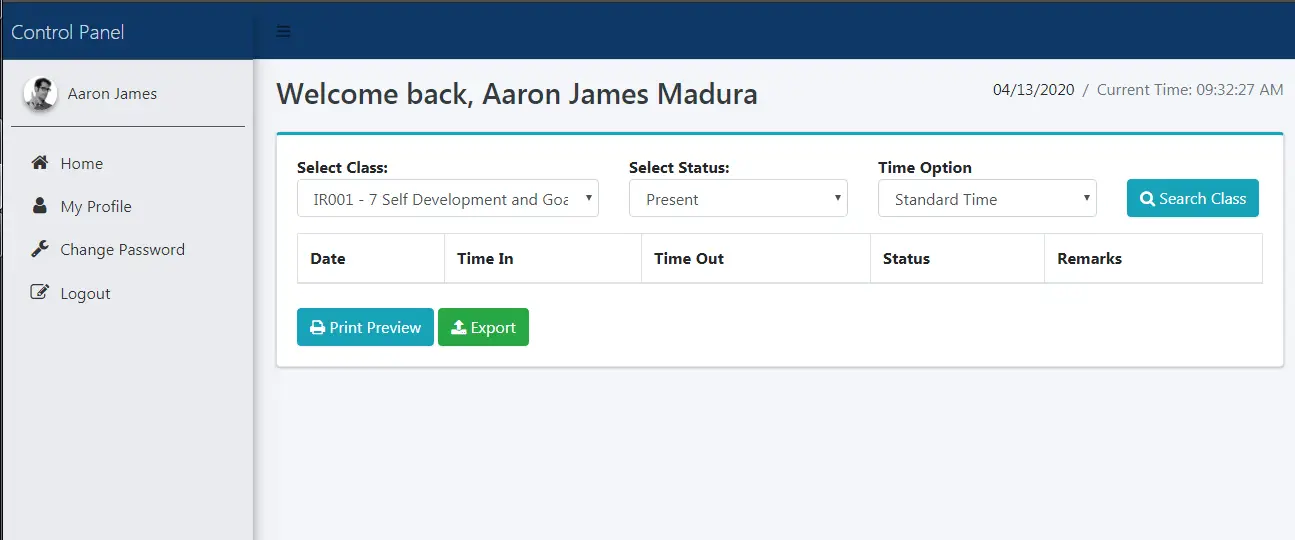
Summary
In conclusion, the attendance system is an essential aspect of any institution or organization. Implementing a well-designed attendance system can help in managing student or employee attendance effectively. The capstone project topics listed in this post provide a wide range of options to students and researchers who are interested in developing attendance systems. These topics cover different types of attendance systems, including those based on QR codes, RFID, biometrics, and GPS technology. Each topic includes a conceptual framework, use case diagram, ER diagram, IPO model, and review of related literature, providing a comprehensive guide for researchers to develop their attendance system. Furthermore, some topics offer free downloads of Bootstrap templates, PHP scripts, and other software tools, which can save time and effort in the development process. By choosing a suitable capstone project topic from the list, students can gain hands-on experience in designing and implementing an attendance system while contributing to the advancement of technology in this field.
Readers are also interested in:
- 50 Best Django Project Ideas
- 70 Best Web-Based Capstone Projects in PHP and MySQL
- 85 Best Management System Project Ideas
You may visit our Facebook page for more information, inquiries, and comments. Please subscribe also to our YouTube Channel to receive free capstone projects resources and computer programming tutorials.
Hire our team to do the project.
